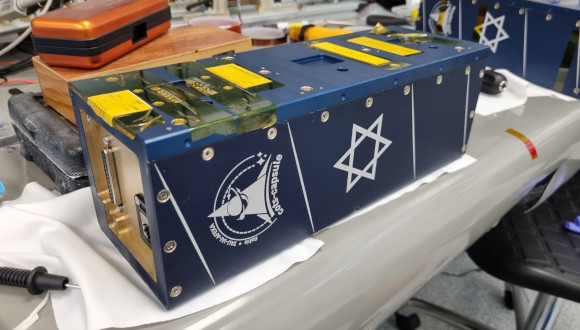TAU satellite protects electronic systems from hazardous radiation effects in space

"COTS-Capsule" has revolutionary potential in satellite science as well as an economic impact
Support this researchTel Aviv University (TAU) recently launched the TauSat-3 satellite to space, a technological demonstrator of the COTS-Capsule, an innovative space mechanism for detecting and mitigating cosmic-ray-induced damage to space systems.
TauSat-3, which is approximately the size of a shoebox, was carefully designed and built by TAU’s team of experts and will examine the performance of a novel radiation detecting and active protective mechanism to guard electronics from cosmic-radiation-induced hazardous phenomena. The “COTS-Capsule” will allow the use of modern commercial electronic systems in space by incorporating them into an protected environment inside the “COTS-Capsule” and operating them in that environment. According to the researchers, this is a mechanism that has revolutionary potential in the field of satellites and space-systems as well as a significant economic impact.
The project was headed by doctoral candidate Yoav Simhony from TAU’s School of Electrical Engineering; Professor Erez Etzion, the head of TAU’s School of Physics and Astronomy; and Professor Ofer Amrani of TAU’s Iby and Aladar Fleischman Faculty of Engineering and the head of the Small Satellite Laboratory. The satellite was launched from the Kennedy Space Center in Florida on board a Falcon 9 rocket, then transferred to the International Space Station (ISS). The satellite was successfully installed and put into operation at the ISS, then connected via the ISS datalink network and communicated successfully with ground stations.
The “COTS-Capsule” is expected to be included in the series of groundbreaking experiments that are to be conducted as part of the “Rakia” [Sky] mission guided by the Ramon Foundation and the Israel Space Agency.
“Integration of the ‘COTS-Capsule’ mission as part of the national ‘Rakia’ mission will provide a rare opportunity to examine the building blocks of this technology in space, ” Professors Etzion and Amrani explain. “In addition to the academic research, the space mission is leveraging and promoting an educational-scientific program in the field of space and radiation.”
“Currently, electronic equipment sent to space must be specifically modified to prevent cosmic radiation induced effects,” Simhony adds. “The protection provided by the ‘COTS-Capsule’ will enable the use of commercial off-the-shelf components in space. This opens the door to the use of advanced electronic components, while significantly shortening both development times and reducing the costs of space products.”